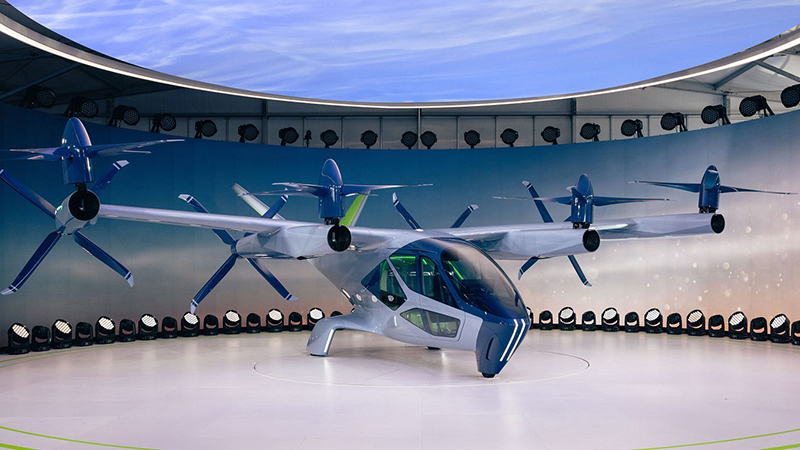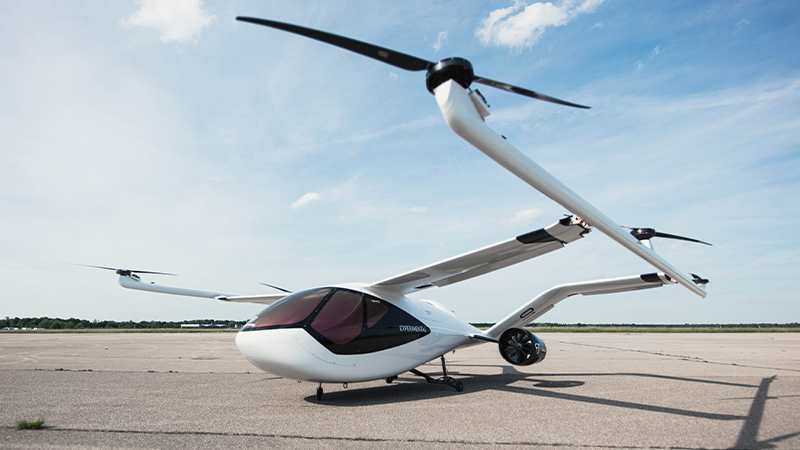

Image Courtesy: Supernal
Advanced air mobility has made considerable strides over the last few years. Considering 2024 is the year that at least one eVTOL company (Volocopter) plans to commercially launch its aircraft, it’s an interesting time to look at wider shifts in aircraft design in the industry.
Luckily, Hyundai-backed AAM company, Supernal, recently revealed its new concept aircraft, the S-A2. Let’s look at how its design differs from existing AAM concepts, and what this could mean for future developments.
Unveiled at the Consumer Electronics Show 2024, the Supernal S-A2 is the company’s latest concept for a passenger air taxi. It will hold a single pilot and four passengers, which is a fairly standard arrangement in current eVTOL designs. As with other eVTOLs, we may see it shift to autonomous flight once the technology has matured.
The S-A2 is an eight-rotor aircraft with fixed wings and a V-shaped tail. Its eight rotors are fitted on four booms across the wings: four facing forward and four facing backwards. The rotors will tilt to provide horizontal and vertical thrust, meaning all eight will function in all stages of flight.
This differs from other design setups, which may have fixed rotors for horizontal flight and tilting rotors for vertical thrust. In fact, the company’s previous design, the S-A1, had this exact setup. The advantage of the eight-rotor tilting design is greater redundancy and efficiency in all flight stages.
In terms of flight, it’ll cruise at a top speed of around 200km/h at an altitude of around 450m. This is fairly standard for urban-specific eVTOL, as is its focus on short-range trips of 40-65km trips.
However, one major difference that Supernal has incorporated into its design is a “multi-generation” concept. In short, the S-A2 has an open design system that allows for upgrades as technology matures. Supernal acknowledges that current technology, such as battery capacity and component efficiency, isn’t yet at the level we need for effective AAM. As such, its system will be upgradable with ease in the future.
The differences between the S-A2 and older designs, such as the S-A1, aren’t massive. However, they’ll have a considerable impact on what future designs will look like. An important difference is the open design concept, which will allow for easy upgrades without the need to build an entirely new vehicle.
Considering Supernal doesn’t plan to launch its aircraft until 2028, this is an important addition. Technology has the potential to change so much in the coming years that the components it’s currently using will likely be outdated by the time its rollout date comes around.
Rather than setting its sights on being the first to launch, Supernal is aiming for a middle-of-the-pack date. It believes this will allow it to take advantage of more matured battery technology and safety features, and to leverage real-world data. In short, its plan is to take advantage of the potential market boom once there’s a bit of push behind the eVTOL industry.
Supernal is just one of many eVTOL companies looking to carve itself a slice of the upcoming action. Its plan is potentially very shrewd, especially considering it has Hyundai backing it with knowledge of mass manufacturing and battery tech.
Of course, whether its market strategy will be picked up by others or whether we’ll see companies sticking with traditional design concepts until technology changes remains to be seen.
